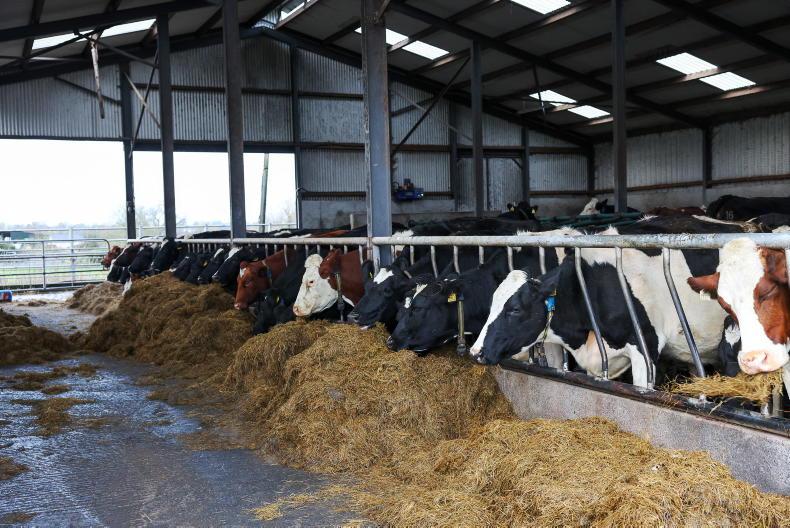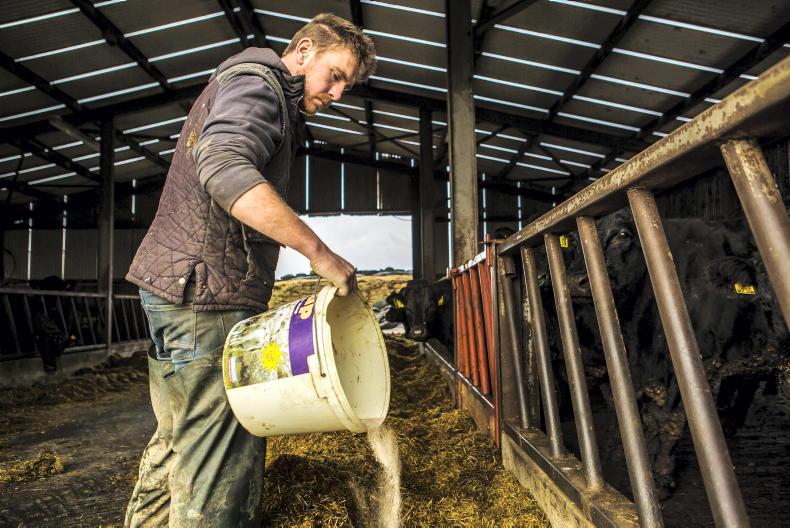Calving pens and creep areas
With weather taking a turn for the worse at the end of last week, turnout has been halted on many farms. This has added pressure to work in the yard, and housing space is back at a premium on many suckler farms.
Straw is very expensive, and has hit €55/bale for a 4 x4 bale in the west, but it’s a necessity at calving or lambing. Don’t limit straw usage in calving pens.
Make sure young calves have a clean, dry bed to lie on for the first few days. Try and clean out calving pens on a regular basis.
Disease will build up in calving pens as calving progresses, and this is when problems will arise.
If a scour outbreak does occur, a good option is to try and move away from the shed that is being used for calving. This will help protect new calves from the disease.
This won’t be an option on many farms, and if weather conditions are favourable, outdoors is the best option for newborn calves.
Plenty of fluids are very important for the scouring calf. Using oral antibiotics is questionable in many cases.
The use of calf jackets for sick, weak calves seems to work well on some farms and can speed up the recovery process.
I have seen some farmers build a temporary shelter in sheds with bales of straw and a sheet of plywood to eliminate drafts and keep calves warm.
Grazing and Silage plans
While ground conditions are not where we need them to be for spreadung fertiliser in many parts of the country, plans should still be made to have it in the yard and ready to go whenever a weather window comes.
You also need to be thinking about silage fertiliser, which is only a few weeks away from application.
The biggest excuse I hear about for not cutting silage early is that the fertiliser isn’t on long enough. Aim for the first week of April for an end of May cut when spreading 80-100 units of nitrogen.
Making a top-quality cut of silage can significantly reduce meal bills on beef farms. Having enough silage for next winter is also very important.
There won’t be any surplus silage to be bought next winter, so any deficit will be very expensive to fill. The best response you will get from fertiliser will be in April and May, so it makes sense to grow as much silage as you can during this time.
With less fertiliser spread on grazing ground, the temptation will be there to eat into silage ground if things get tight in May. Other actions like reducing stocking rate or making sure you have enough grass for grazing through fertiliser applications before you eat into silage ground.
On dry stock farms, 25kg of urea/acre should be spread as soon as ground conditions allow to kick start grass growth and get animals out to grass. Weanlings should be targeted to get out to grass as soon as ground conditions allow.
Winter grass growth rates have been good on a lot of farms, and there is good grass supply on a lot of farms. Getting cattle out now to use up this grass and kickstart growth on paddocks through grazing will help reduce costs in 2024.
Once grazed, these paddocks should get a light application (1,500-2,000 gallons/acre) of slurry spread via a trailing shoe or dribble bar tanker.










SHARING OPTIONS